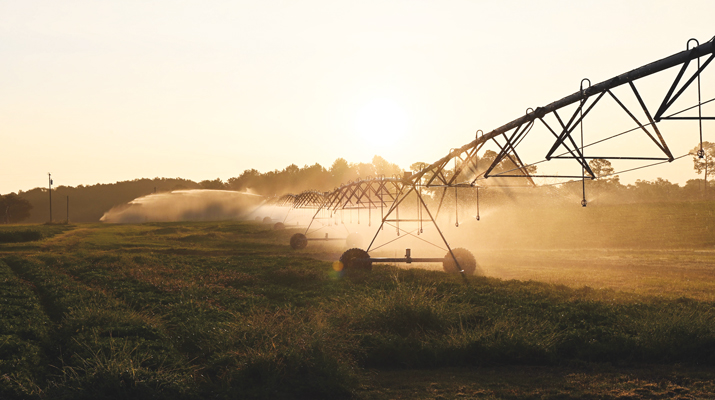Propane a wanted commodity in petrochemical sector
Propane dehydrogenation – PDH, for short.
The process is becoming a phenomenon in the propane and petrochemical industries and another result of the U.S. shale boom and increasing natural gas liquids production. PDH converts propane into propylene, a common petrochemical building block used in the manufacture of plastics and other products.
A vast domestic supply of low-cost propane and a shortage of propylene are motivating companies to plan and build PDH facilities, mainly on the Gulf Coast, ripe with production capacity and export capability.
With higher propylene prices and lower propane prices, PDH plant margins in the United States have been increasing in the last five years, favoring new plants relying on the PDH process, according to a report by Intratec Solutions LLC.
PetroLogistics LP operates the nation’s only PDH facility, on the Houston Ship Channel, but several new units planned by 2018 could consume an additional 2.3 billion gallons of propane per year, according to ICF International research presented in the 2013 Propane Market Outlook.
The growth in the petrochemical and export markets represents a great source of propane demand at a time when U.S. consumer propane use has fallen.
Early this year, petrochemical consumption reached about 500,000 barrels of propane per day, an increase of about 100,000 barrels from traditional amounts, notes Peter Fasullo, cofounder of Houston-based energy consultancy En*Vantage. And, combined with new PDH plants , petrochemicals will have the capability to consume 650,000 barrels of propane per day by 2017, he adds.
“The capability of the petrochemical and export markets to take in more propane is growing,” Fasullo says. “It’s something retailers need to be conscious of. We may not have the excess propane that goes into storage like we typically have had in the past because a lot can be exported or consumed in the petrochemical industry.”
Petrochemical consumption of propane is nothing new, with the industry taking in about 40 percent of total propane supplies. But just as petrochemical consumption of propane has been increasing, so has the supply of propane, mainly from domestically produced natural gas liquids. North American production of propane from natural gas liquids is projected to increase from 13.4 billion gallons in 2012 to 15.6 billion gallons in 2015 and to 18.1 billion gallons by 2020, ICF data shows.
“We’ve become the new Middle East,” Fasullo says. “Our hydrocarbon supply base is quite large.”
This new source of supply is lowering the cost of propane and making its use as a feedstock attractive to petrochemicals, which historically have sought propane in the summer when demand from the winter heating season eases and prices dip.
But with the historic mild winter of 2011-12 collapsing prices and leading to high inventories and the new supply sources coming online, petrochemicals have enjoyed propane prices economically favorable for their operations. Propane spot prices for the second half of 2012 and the first half of 2013 averaged 89 cents per gallon, according to the U.S. Energy Information Administration (EIA).
“The major driver is the low feedstock cost, as a way for U.S. petrochemical producers to improve margins and reaffirm their competitive abilities compared to Asia-based or Latin America-based competitors,” says Mark Chung, senior manager of NGL analytics at Evergreen, Colo.-based Bentek Energy.
Breaking it down
Propane is not only used as a feedstock for propylene production, but it can be used to make ethylene, another common petrochemical building block for the manufacturing of numerous end-use products, such as pool liners, food packaging, footwear, tires and adhesives.
Ethylene is created through a process called cracking – subjecting the propane or other feedstock to high temperatures in order to break the molecules and form the compounds.
While propane is versatile enough to fuel applications in many market segments, there is another low-cost, domestically produced natural gas liquid, ethane, which is used only as a petrochemical feedstock and mainly in the production of ethylene. Ethane prices, which tend to follow natural gas prices, averaged 27 cents per gallon for the first six months of the year, more than 45 percent below the same period of 2012, according to EIA.
The U.S. petrochemical industry plans to crack more ethane because it is cheap and gives companies an advantage over foreign competitors that use more costly oil-based feedstocks, such as naphtha, Fasullo says. EIA has listed 14 proposed additions of U.S. ethylene production capacity by 2020, totaling 10.1 million metric tons per year.
This shift toward ethane in crackers is contributing to the shortage of propylene. Like propane, propylene is a byproduct of other processes – in its case, petroleum refining and steam cracking to produce ethylene. Less refining for gasoline and the increased use of ethane in the crackers are reducing the amount of propylene produced on the side. This is the genesis for the PDH units and the need to convert propane into propylene.
Propane dehydrogenation
Enter PetroLogistics, which launched its PDH operation in 2010.
President and CEO Nathan Ticatch says management recognized an imbalance building in 2003 due more to a higher demand for propylene than today’s contracting supply. About 5 billion pounds of propylene have come out of a 30- to 35-billion-pound market, he says.
“The reason there is so much interest in the commodity right now and in our process in particular is because propylene is very short,” Ticatch says. “Supply has fallen off and propane is very plentiful from shale gas.”
The company purchased an old ethylene cracker from ExxonMobil in 2008, demolished certain facilities and constructed a new facility for about $640 million (a similar unit today would cost about $1.5 billion, Ticatch says).
Its PDH unit combines propane (C3H8), heat and a catalyst, which encourages a chemical reaction to form propylene (C3H6). It utilizes the Catofin propane dehydrogenation technology, where 1 pound of propane nets 0.85 pounds of propylene.
“We get a lot of propylene and not much else,” Ticatch says. “The chemical term is ‘selectivity.’ We get the product we really want.”
Ticatch says the process originated during World War II when the United States converted butane into butadiene, a key element in synthetic rubber.
PetroLogistics consumes about 25,000 barrels of propane per day – the company’s only feedstock – with supply from Enterprise Products Partners arriving at its facility by pipeline. Propylene then exits the facility by pipeline to five contract customers – Dow, Total, Ineos, BASF and Lyondell – who then turn the propylene into another product. The company’s location on the Houston Ship Channel gives it access to about half of U.S. propylene consumption, according to its website.
PetroLogistics has an annual production capacity of 1.45 billion pounds of propylene. According to its quarterly report, the company produced 255 million pounds of propylene in the second quarter, which included a 10-day unplanned outage for repairs and maintenance, and sold 265 million pounds. It purchased propane for an average of 91.2 cents per gallon.
Asked how higher propane prices would impact his company, Ticatch says, “We have a product [propylene] that prices at a premium to crude and a feedstock [propane] that prices at a discount to crude. As long as crude oil prices at a reasonable level, there will be a margin.”
Petrochemical players
Companies involved in petrochemicals can supply and/or consume propane. DCP Midstream, Energy Transfer Partners and Targa Resources, for example, have the capability to supply propane to petrochemicals.
Midstream giant Enterprise Products Partners has its own petrochemical division, including seven propylene fractionation plants and 680 miles of pipeline, and is one of the companies planning a PDH facility (for 2015). Chevron Phillips, ExxonMobil and Dow are three big petrochemical producers and consumers of propane.
The growth of the petrochemical industry isn’t limited to within U.S. borders, however. Sunoco Logistics’ Mariner West pipeline is designed to carry ethane from the Marcellus shale in western Pennsylvania to the Sarnia, Ontario, Canada, petrochemical market. The Vantage Pipeline also will move ethane from the Bakken shale in North Dakota to a Nova chemical plant in Alberta, Canada. In addition, China has been importing high levels of propane because of low prices and the impending startup of its own PDH plants, the PIRA Energy Group reports.
Photo of PetroLogistics’ propane dehydrogenation plant in Houston
















